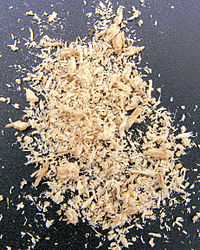
Photo from wikipedia
Background Cross-field ventilation is used as a conventional choice during carinal resection and anastomosis, but may interfere with surgical procedures. High-frequency jet ventilation (HFJV) allows for control of oxygenation in… Click to show full abstract
Background Cross-field ventilation is used as a conventional choice during carinal resection and anastomosis, but may interfere with surgical procedures. High-frequency jet ventilation (HFJV) allows for control of oxygenation in the open airways; nevertheless, there is a paucity of data to support its benefits versus cross-field ventilation. Herein, we aimed to investigate the efficacy of HFJV on intraoperative oxygen saturation compared with cross-field ventilation in patients undergoing carinal surgeries. Methods We conducted a retrospective analysis of 82 adults who underwent carinal resection and reconstruction (CRR) for benign or malignant diseases and received cross-field ventilation or HFJV at Shanghai Chest Hospital between January 2018 and September 2021. Patients were excluded when they had emergency surgeries or critical airway stenosis requiring extracorporeal life support, or limited resection without the need for cross-field ventilation or HFJV. Patients were classified into two groups based on the airway approach: cross-field ventilation group and HFJV group. The primary outcome was the area under the curve (AUC) of intraoperative hypoxemia defined as peripheral oxygen saturation (SpO2) below 90% lasting at least 1 minute. The secondary outcomes included cumulative time of SpO2 below 90%, AUC and cumulative time of severe intraoperative hypoxemia (defined as SpO2 below 80% lasting at least 1 minute), and AUC and cumulative time of suboptimal SpO2 (defined as SpO2 below 95% lasting at least 1 minute). Results Thirty-two patients were included in the final analysis, with 22 patients in cross-field ventilation group and 10 patients in HFJV group. The two groups did not differ in the severity and duration of intraoperative hypoxemia (P=0.366). The median (IQR) AUC of SpO2 below 90% was 21.92 (4.28, 54.48) min in cross-field ventilation group and 28.93 (10.78, 199.89) min in HFJV group. The cumulative time of SpO2 <90% was 16.67 (4.46, 37.11) min in cross-field ventilation group and 19.32 (7.50, 121.24) min in HFJV group, without statistical difference between groups (P>0.05). Severe intraoperative hypoxemia did not occur in either group. Conclusions This retrospective case series demonstrates that HFJV can be adopted to maintain oxygenation in CRR, without the interruption of surgical procedure.
Journal Title: Journal of Thoracic Disease
Year Published: 2022
Link to full text (if available)
Share on Social Media: Sign Up to like & get
recommendations!